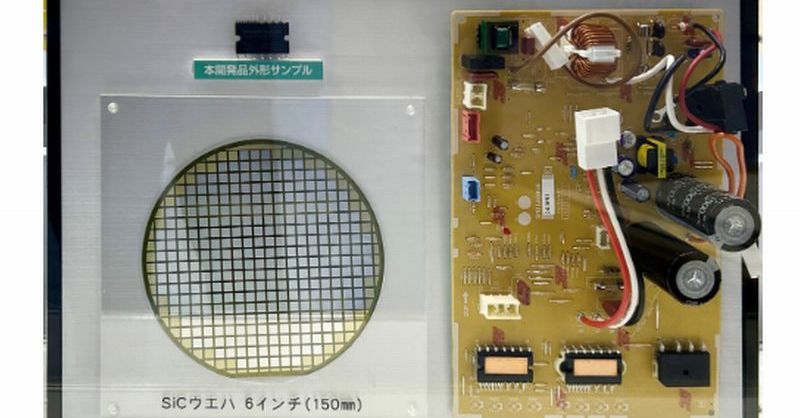Next-Gen SiC IPM: Revolutionizing Air Conditioners and Slashing Energy Costs
The air conditioning industry is on the cusp of a significant transformation, driven by the advent of next-generation Silicon Carbide (SiC) Integrated Power Modules (IPM). These innovative devices promise to drastically reduce energy consumption in air conditioners, leading to lower bills for consumers and a smaller carbon footprint for the planet. This article delves into the exciting possibilities of SiC IPMs and their impact on the future of cooling.
What are SiC IPMs and How Do They Work?
Silicon Carbide is a wide-bandgap semiconductor material offering superior performance compared to traditional silicon-based IGBTs (Insulated Gate Bipolar Transistors) used in most current air conditioners. SiC IPMs integrate several power components – including SiC MOSFETs (Metal-Oxide-Semiconductor Field-Effect Transistors), diodes, and gate drivers – onto a single substrate. This integration results in several key advantages:
- Higher Efficiency: SiC MOSFETs exhibit lower on-resistance and switching losses compared to silicon IGBTs. This translates directly to significantly improved efficiency in power conversion, meaning less energy is wasted as heat.
- Smaller Size and Lighter Weight: The integrated design allows for a much more compact and lightweight IPM, simplifying the design and manufacturing of air conditioners.
- Improved Reliability: The robust nature of SiC reduces the risk of failure, leading to longer lifespan and lower maintenance costs.
- Faster Switching Speeds: SiC MOSFETs switch on and off much faster than silicon IGBTs, enabling more precise control of the compressor and fan motors. This improves overall efficiency and responsiveness.
The Impact on Air Conditioner Energy Costs
The enhanced efficiency of SiC IPMs directly translates to lower energy consumption. Consider these potential benefits:
- Reduced Electricity Bills: By minimizing energy losses, SiC IPMs can substantially reduce the electricity needed to operate an air conditioner, resulting in lower monthly bills for homeowners and businesses.
- Lower Carbon Footprint: Less energy consumption means a smaller carbon footprint, contributing to global efforts to mitigate climate change. This is particularly relevant considering the significant energy consumption of air conditioning worldwide.
- Improved Energy Efficiency Ratings: Air conditioners utilizing SiC IPMs are expected to achieve higher energy efficiency ratings (like SEER and EER), making them more attractive to environmentally conscious consumers.
The Future of Cooling with SiC IPM Technology
The adoption of SiC IPM technology is gaining momentum. Several major manufacturers are already incorporating SiC IPMs into their next-generation air conditioner designs. We can expect to see:
- Wider Availability: As production scales up, SiC IPMs will become more affordable and widely available, making them accessible to a larger market segment.
- Further Innovation: Ongoing research and development will continue to improve the performance and cost-effectiveness of SiC IPMs, leading to even greater energy savings in the future.
- Integration with Smart Home Systems: SiC IPMs can seamlessly integrate with smart home technology, allowing for more precise control and optimization of energy consumption based on occupancy and environmental conditions.
Conclusion: A Cooler, Greener Future
Next-generation SiC IPMs represent a pivotal advancement in air conditioning technology. Their superior efficiency, compact design, and enhanced reliability pave the way for a future with significantly lower energy costs and a reduced environmental impact. As this technology becomes more mainstream, consumers can look forward to more energy-efficient and environmentally friendly cooling solutions.
Keywords: SiC IPM, Silicon Carbide, Integrated Power Module, Air Conditioner, Energy Efficiency, Energy Savings, Electricity Costs, Cooling Technology, Semiconductor, MOSFET, IGBT, Climate Change, Sustainability, Green Technology, Smart Home, SEER, EER
Internal Links (Example - replace with actual links to relevant pages on your website):
- [Link to a page about energy-efficient appliances]
- [Link to a page about smart home technology]
External Links (Example - replace with links to reputable sources):
- [Link to a relevant research paper on SiC technology]
- [Link to a news article about a major manufacturer adopting SiC IPMs]
Call to Action: Learn more about energy-efficient cooling solutions and explore the latest advancements in air conditioning technology. [Link to a relevant resource or product page].
